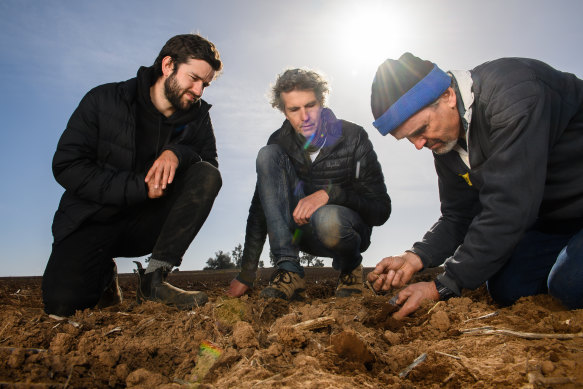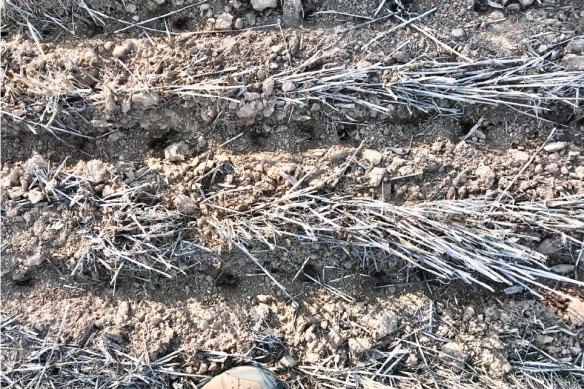Amid the devastation of the 2021 mouse plague, when swarms of invasive house mice destroyed $1 billion worth of crops and seeds, a photo of a wheat field studded with a neat line of holes caught Professor Peter Banks’ eye.
The marauding mice weren’t tearing up dirt as they searched for freshly sown seeds, like thugs smashing open jewellery cases with a crowbar. They were pinpointing each seed by scent and digging precise holes – more like gloved thieves extracting diamonds from a safe and vanishing without a trace.

Finn Parker (left), Professor Peter Banks and farmer Peter Rayner survey a plot where researchers “camouflaged” the odour of wheat seeds and significantly reduced damage from mice.Credit: Sydney Morning Herald
Banks, a conservation biologist at the University of Sydney, and PhD student Finn Parker hatched a plan. If they doused a field of seeds with wheat germ oil, making the entire plot smell tasty, could this olfactory camouflage bust the mice’s seed-seeking abilities?
The results of their study, published in Nature Sustainability, say yes. The easy and non-toxic method of camouflaging seeds successfully befuddled the mice and significantly reduced seed loss.
“It’s just like visual camouflage,” Banks said. “If a whole wall is yellow, and you’re trying to find something yellow on the wall, it’s really hard. Camouflage works by making the background the same as the target. This is exactly the same but using odour.”
Banks and Parker sprayed wheat germ oil – a by-product of wheat milling – every few days starting a week before sowing. Two weeks after sowing, after seeds began to germinate and sprout, odour-camouflaged plots had 74 per cent less mouse damage compared to a control. Overall, seed loss decreased by about 60 per cent.

Lines of neat holes dug by mice in crop fields as they pinpointed each seed with smell gave researchers the idea to confuse the mice’s olfactory senses.Credit: Peter Banks
Normally, the mice get better at locating seeds as time goes on after sowing. More than double the seed damage occurs in the second week compared to the first.
Using odour camouflage interrupted this rapid learning because the task of finding seeds was far more difficult. Animals, including mice and humans, usually go for the calorie hit that requires the least effort to acquire. And mice are hungry creatures – each individual can devour 100 seeds in a night.
